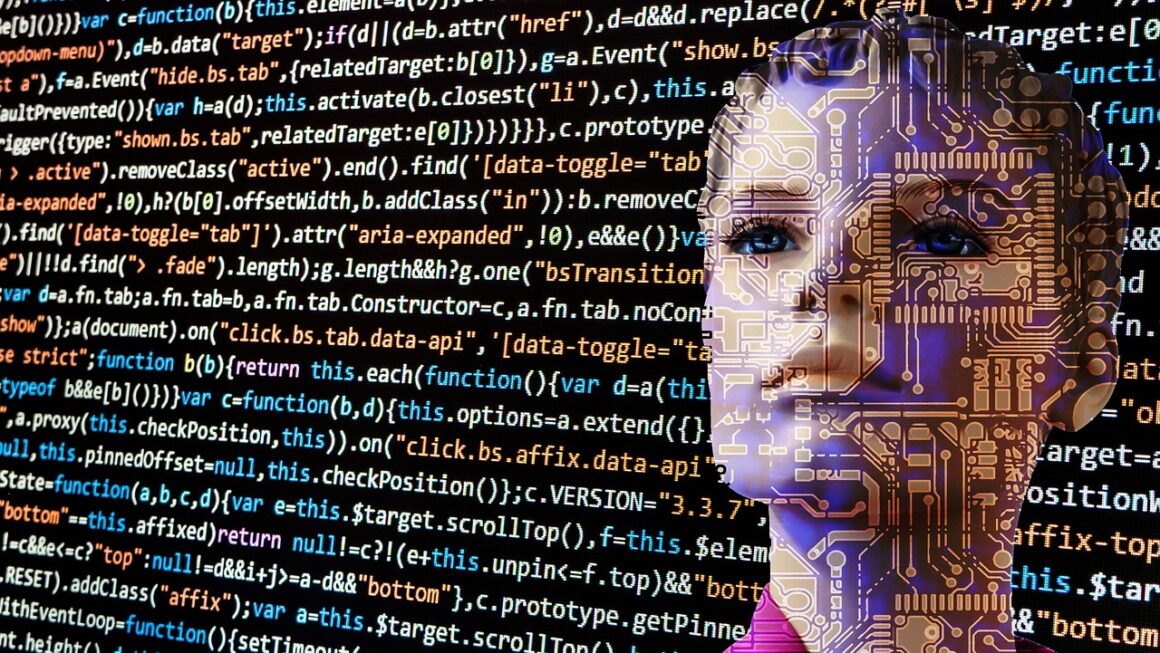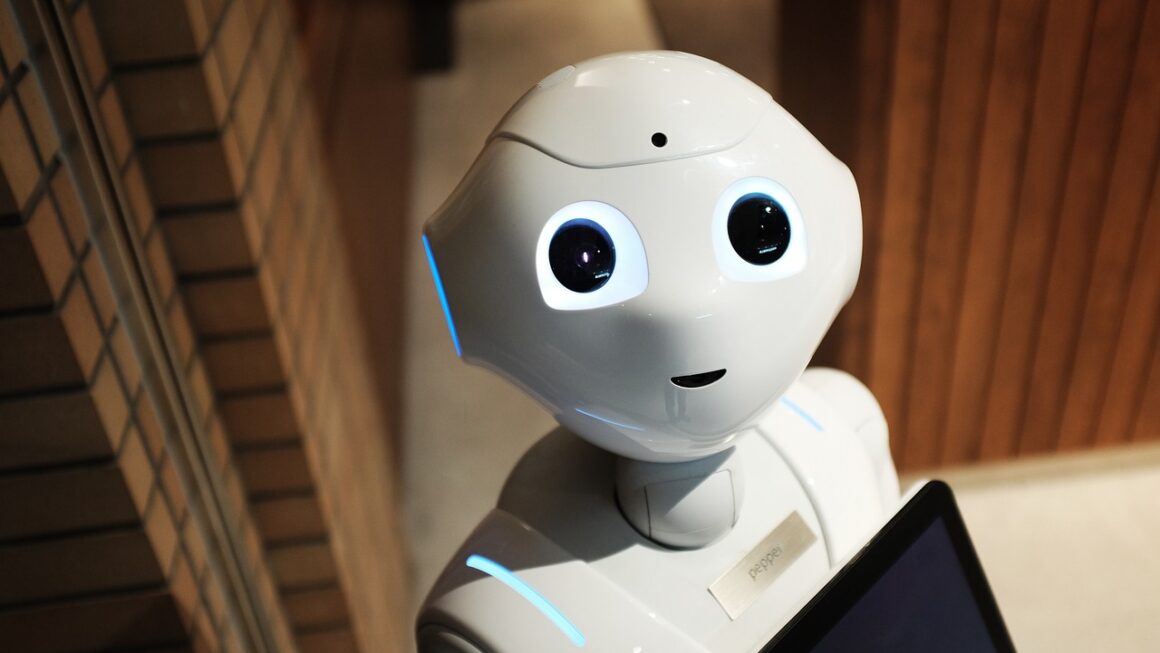Artificial intelligence (AI) is no longer a futuristic concept relegated to science fiction. It’s rapidly transforming industries, reshaping our daily lives, and driving innovation at an unprecedented pace. Staying ahead of the curve in this ever-evolving landscape requires a keen understanding of current trends and their potential impact. This post explores the key artificial intelligence trends you need to know about to navigate the future.
The Rise of Generative AI
Generative AI, the branch of AI focused on creating new content, is arguably the most impactful trend of the moment. This includes generating text, images, audio, and even code.
What is Generative AI?
Generative AI models are trained on vast datasets to learn the underlying patterns and structures of the data. Once trained, they can generate new, original content that mimics the style and characteristics of the training data. Examples include:
- Text Generation: Creating articles, blog posts, marketing copy, and even screenplays.
- Image Generation: Producing realistic or artistic images from text prompts.
- Audio Generation: Synthesizing music, sound effects, and voiceovers.
- Code Generation: Writing code in various programming languages based on natural language descriptions.
Examples and Applications
- Marketing: Generating personalized ad copy and product descriptions using tools like Jasper.
- Content Creation: Creating high-quality blog posts and articles with minimal human input using platforms like Copy.ai.
- Design: Generating multiple design options for logos, websites, and marketing materials using tools like Midjourney and DALL-E 2.
- Software Development: Assisting developers in writing code and automating repetitive tasks using GitHub Copilot.
The Future of Generative AI
Generative AI is expected to become even more sophisticated in the coming years, with models capable of generating more complex and nuanced content. The potential applications are vast, ranging from revolutionizing creative industries to automating tasks across various sectors. Expect to see:
- Increased integration into existing workflows and applications.
- Improved control and customization options for users.
- Greater focus on ethical considerations and responsible use.
AI-Powered Automation
AI is increasingly being used to automate tasks that were previously done by humans. This automation is not just about replacing human labor, but also about increasing efficiency, reducing errors, and freeing up humans to focus on more strategic and creative work.
Robotic Process Automation (RPA) Enhanced by AI
RPA involves using software robots to automate repetitive, rule-based tasks. When combined with AI, RPA becomes even more powerful. AI-powered RPA can handle more complex tasks that require decision-making and adaptability.
- Example: Automating invoice processing by using AI to extract data from invoices and RPA to enter the data into accounting systems.
- Benefits: Reduced costs, increased accuracy, improved efficiency, and enhanced employee productivity.
Intelligent Document Processing (IDP)
IDP uses AI to automatically extract and process information from documents. This can include invoices, contracts, reports, and other types of documents.
- Example: Automating the extraction of key data from insurance claims to speed up the claims processing process.
- Benefits: Faster processing times, reduced errors, improved data quality, and enhanced compliance.
The Impact on the Workforce
While AI-powered automation may lead to job displacement in some areas, it also creates new opportunities. Workers will need to develop new skills to work alongside AI systems and focus on tasks that require creativity, critical thinking, and emotional intelligence.
AI in Healthcare
The healthcare industry is undergoing a significant transformation thanks to AI. From drug discovery to personalized medicine, AI is improving patient outcomes and reducing costs.
AI-Driven Diagnostics
AI algorithms can analyze medical images, such as X-rays, CT scans, and MRIs, to detect diseases earlier and more accurately.
- Example: AI systems can analyze mammograms to detect breast cancer with greater accuracy than human radiologists.
- Benefits: Earlier detection of diseases, improved accuracy of diagnoses, and reduced workload for healthcare professionals.
Personalized Medicine
AI can analyze patient data, such as genetic information, medical history, and lifestyle factors, to develop personalized treatment plans.
- Example: AI can predict which patients are most likely to respond to a particular drug, allowing doctors to tailor treatment plans accordingly.
- Benefits: More effective treatments, reduced side effects, and improved patient outcomes.
Drug Discovery and Development
AI can accelerate the drug discovery process by identifying potential drug candidates and predicting their effectiveness.
- Example: AI can analyze vast databases of chemical compounds to identify molecules that are likely to be effective against specific diseases.
- Benefits: Faster drug development, reduced costs, and increased likelihood of finding new treatments.
Ethical AI and Responsible AI
As AI becomes more prevalent, it’s crucial to address the ethical implications and ensure that AI systems are developed and used responsibly.
Bias and Fairness
AI algorithms can perpetuate and amplify existing biases in the data they are trained on. It’s important to ensure that AI systems are fair and do not discriminate against certain groups of people.
- Example: Facial recognition systems have been shown to be less accurate for people of color.
- Solution: Using diverse datasets, auditing AI systems for bias, and developing algorithms that are inherently fair.
Transparency and Explainability
It’s important to understand how AI systems make decisions. Transparency and explainability are crucial for building trust and ensuring accountability.
- Example: Providing explanations for why an AI system made a particular decision, allowing users to understand and challenge the decision.
- Solution: Using explainable AI (XAI) techniques to make AI systems more transparent and understandable.
Data Privacy and Security
AI systems often rely on large amounts of data, which can raise concerns about data privacy and security. It’s important to protect sensitive data and ensure that AI systems are used in a way that respects people’s privacy.
- Example: Using anonymization techniques to protect the privacy of patient data used in healthcare AI systems.
- Solution: Implementing robust data security measures and adhering to data privacy regulations, such as GDPR.
AI in Cybersecurity
The increasing sophistication of cyber threats demands advanced security solutions. AI is becoming an indispensable tool in the fight against cybercrime.
Threat Detection and Prevention
AI algorithms can analyze network traffic and system logs to detect and prevent cyberattacks in real time.
- Example: AI can identify unusual patterns of activity that may indicate a malware infection or a phishing attack.
- Benefits: Faster detection of threats, reduced risk of data breaches, and improved security posture.
Vulnerability Management
AI can scan systems for vulnerabilities and prioritize remediation efforts.
- Example: AI can identify software vulnerabilities and recommend patches to fix them.
- Benefits: Reduced risk of exploitation, improved system security, and streamlined vulnerability management.
Automated Security Response
AI can automate security responses to incidents, such as isolating infected systems and blocking malicious traffic.
- Example: AI can automatically block access to a website that is known to be distributing malware.
- Benefits: Faster response times, reduced impact of attacks, and improved security efficiency.
Conclusion
Artificial intelligence is a rapidly evolving field with the potential to transform industries and improve our lives in many ways. By understanding the key trends in AI, organizations and individuals can position themselves to take advantage of the opportunities that AI offers while mitigating the risks. Staying informed about these developments is crucial for success in the age of AI. Embrace continuous learning and adaptation to navigate this transformative technology effectively.




